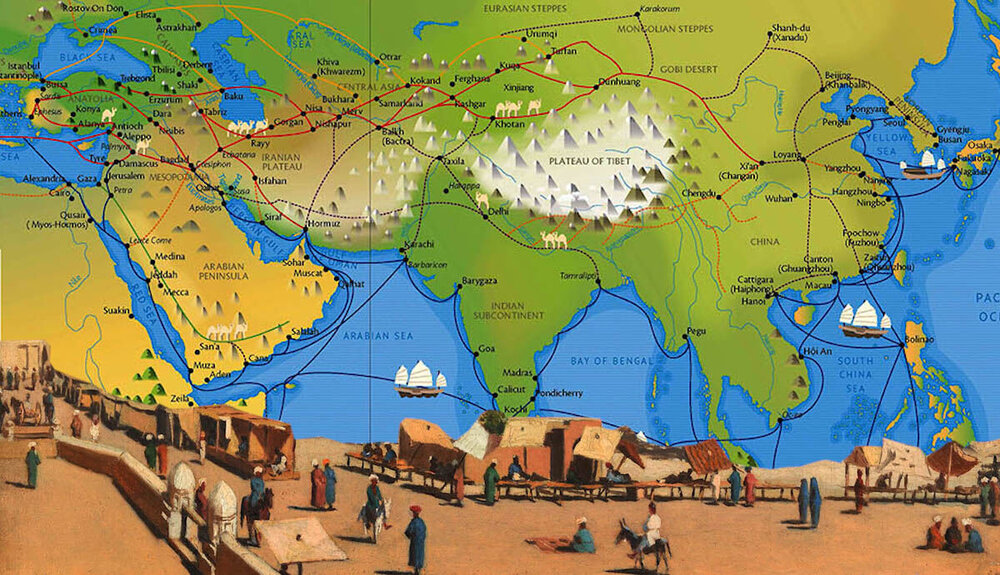Semnan picked to represent Iran at Silk Road tourism union

TEHRAN – Iran has selected Semnan to represent the country at a union of cities across the Silk Road based on an initiative launched by China to promote tourism along the ancient route that once linked Asia to the Western world.
“Semnan, an ancient city that enjoys high tourism potential, has been selected as the representative of Iran for the union of cities across the Silk Road,” Ali-Asghar Shalbafian, the deputy tourism minister, said on Saturday.
“Semnan, Qazvin, and Neyshabur constituted the shortlist of candidates when a team of experts assessed their capacities in the realms of tourism, culture, and economy following a model proposed by the international union of tourist cities along the Silk Road,” Shalbafian said.
He made the remarks at a conference in Semnan, which was attended by Beijing’s ambassador to Tehran Chang Hua, and tens of travel insiders and cultural heritage experts.
“We appreciate efforts made by the ambassador of the People’s Republic of China to develop tourism between the two nations…” Shalbafian said.
Addressing the event, the Chinese envoy reminded the attendees of his travel to Semnan and aimed to introduce it as a member of the union cities across the Silk Road.
Chang said that he had already been more familiar with major (Iranian) cities such as Mashhad, Isfahan, and Shiraz, adding he traveled to Semnan to determine the city as a member of the union.
The ambassador said that (being situated on) the ancient Silk Road was a historical pride of the Semnan region.
“The friendship between Iran and China dates (some) thousand years, and the Silk Road has played an effective role in that bond,” he said.
As mentioned by Shalbafian, Semnan has diverse capabilities in a wide range of sectors, such as tourism, history, culture, human resources, and infrastructure. Having over 600 kilometers of common Silk Road routes is also one of the major criteria for selecting Semnan, he added.
Cooperation between the chosen city of Iran and this union could result in several achievements, including improved tourism resources, the organization of promotional events, professional training exchanges, information sharing, technology transfer and the promotion of the local tourism industry, he said.
“Furthermore, it will help promote sustainable urban development and improve Silk Road’s overall brand, as well as cooperation in policies related to resource optimization, market integration, regional tourism product development, improvement of Silk Road tourism’s image, and ultimately promoting joint inbound tourism growth.”
The main population centers of Semnan province lie along the ancient Silk Road (and modern-day Imam Reza Expressway), linking Rey (Tehran) with Khorasan (Mashhad). While few visitors spend much time in the area, driving through you can easily seek out several well-preserved caravanserais (notably Dehnamak and Ahowan), cisterns (the Cafe Abenbar in Garmsar is a special treat), and ruined mud citadels (Padeh is lumpy but fascinating.). The large, bustling cities of Semnan, Damghan and Shahrud (Bastam) all have a small selection of historic buildings and Semnan has a fine old covered bazaar.
The ancient Silk Road has existed for thousands of years, passing through empires, kingdoms, reigns, and societies throughout history. At certain times in its long history, traders could travel freely along these routes, whereas at others, travel was difficult or dangerous.
According to UNESCO, the Silk Road enriched the countries it passed through, transporting cultures, religions, languages, and of course material goods into societies across Europe, Asia and Africa, and uniting them all with a common thread of cultural heritage and plural identities.
There are over 40 countries today alongside the historic Land and Maritime Silk Road, all still bearing witness to the impact of these routes on their culture, traditions and customs.
Travelers along the Silk Road were fascinated not only by trade but also by the intellectual and cultural exchange that was taking place in cities along the route, many of which developed into hubs of culture and learning. Science, arts, and literature, as well as crafts and technologies, were thus shared and disseminated into societies along the lengths of these routes, and in this way, languages, religions, and cultures developed and influenced each other.
AM
